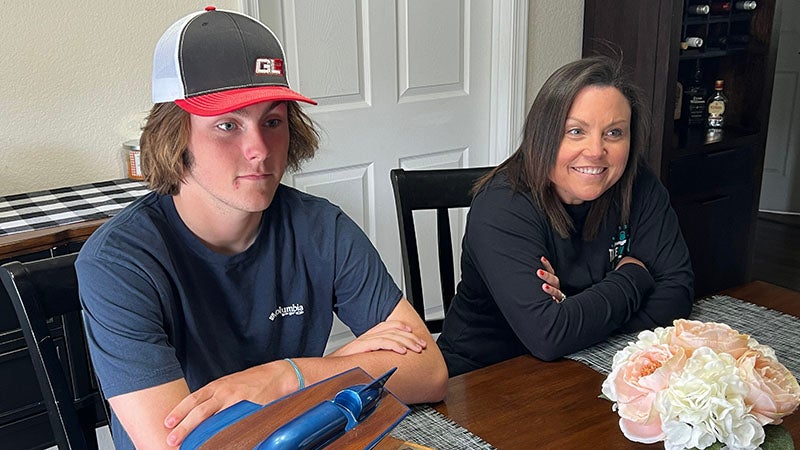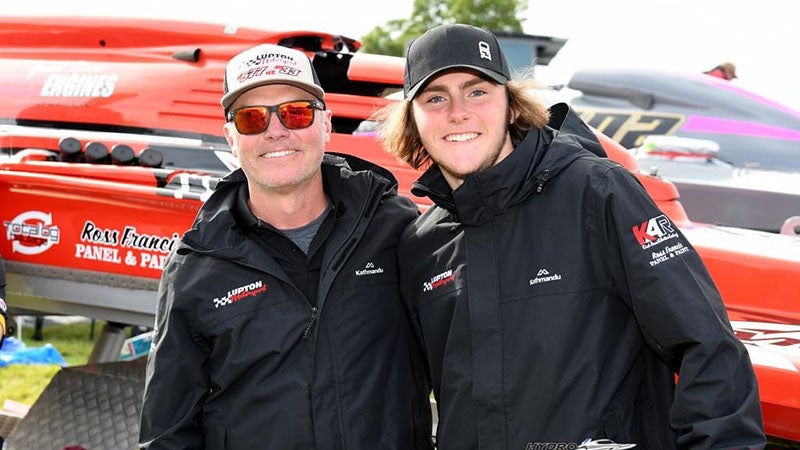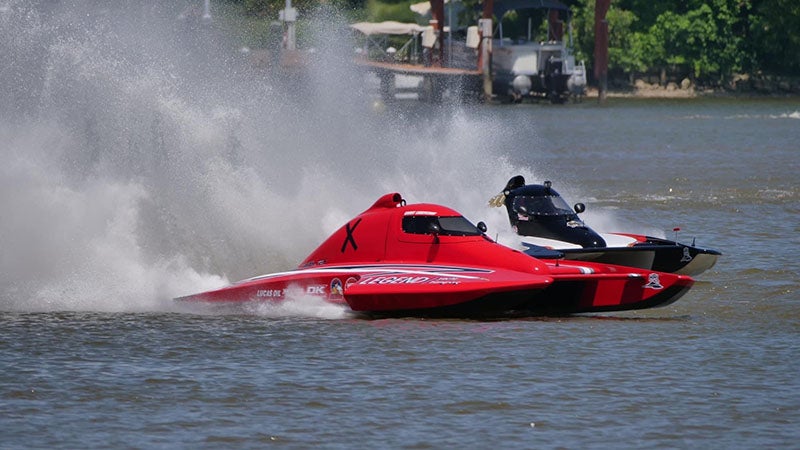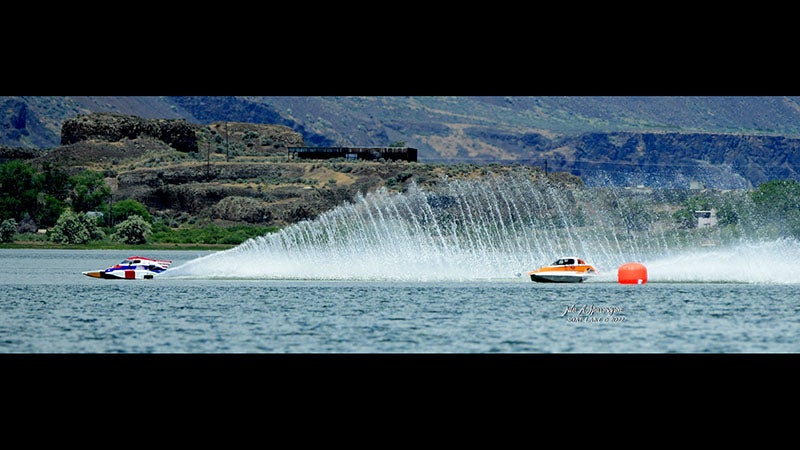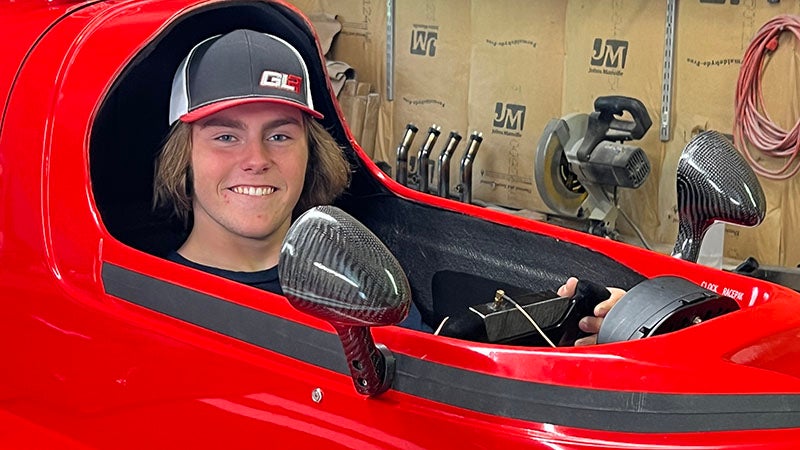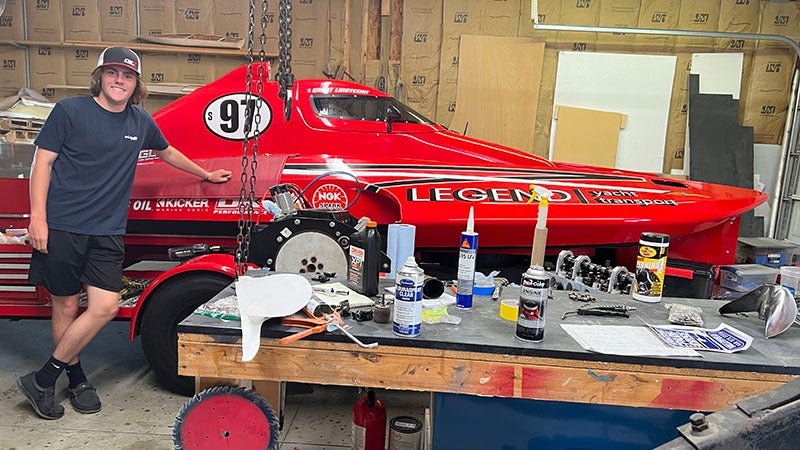It’s a FamilyTradition
Published 6:50 pm Friday, July 28, 2023
|
Getting your Trinity Audio player ready...
|
Story by Phyllis Speidell
Grant Liddycoat, at 15-years-old, is too young to legally drive the family car, but the rising sophomore at Isle of Wight Academy excels in racing high powered hydroplanes.
He began racing powerboats when he was just 9 years old, starting with light weight outboards in the American Power Boat Association Junior Class. In 2021 he moved up to inboard hydroplanes, a 13-year-old competing against veteran adult drivers, and won the North American Championship and the Eastern Divisional Championship of the APBA. He also earned the East Coast Rookie of the Year title. In 2022 he won the APBA Summer National Title and was the National Champion of the APBA T class – the I.5 Litre hydroplanes that run up to 80 – 85 mph.
He is the youngest driver to ever win each of the titles in the APBA.
“Sometimes it’s weird racing against guys that are in their 30s and 40s, but now they’ve gotten to know me and how I race so they’re not as surprised,” Grant said.
His racing record is impressive, especially for a 15-year-old, but even more so when you understand what a hydroplane is.
Hydroplanes are prop-riding racing boats with outboard sponsons, capable of moving along lakes and rivers at up to 200 mph. The boats’ history springs from the early 1900s when organized powerboat racing launched and the sport became internationally popular.
Today’s sleek water-skimming hydroplanes developed from the early 1950s when surplus World War II aircraft engines often powered the boats and the competitive boat drivers were as well-known as NASCAR drivers today. Band leader Guy Lombardo, World War II Navy veteran Bernie Little, Californian Bill Muncey , an eight-time gold cup champion, and Chip Hanauer, who drove one of the sport’s most famous hydroplanes, the Miss Budweiser, were among the leading drivers.
Not too many years ago, the hydroplanes’ distinctive “Wa Wa” sound echoed over Mill Creek near Fort Monroe, the Elizabeth River, and the Pasquotank River. Several of the most renowned hydroplane builders and drivers were local – Henry and Larry Lauterbach, Chris Hall Sr., Earle Hall and Chris Hall Jr, and speed record holder Bob Rowland – and often tested their boats, sending up rooster tails on local waters. For years, the Lauterbachs crafted beautifully powerful hydroplanes in their workshop in Suffolk.
Grant and his parents, Scott and Kim Liddycoat, both experienced hydroplane drivers, live in Suffolk and carry on the sport today when hydroplane racing is lesser known.
Scott Liddycoat, a second-generation hydroplane racer, is the son of Canadian hydroplane builder and racer Lorne Liddycoat, who, the family said, didn’t really care about prize money, just loved the competition. Father and son worked on the boats and went to the races together. Scott took the wheel when he was 19 and hasn’t given it up yet. One of the top inboard hydroplane drivers, he has moved up to the more powerful unlimited hydroplanes, earning championships in each class.
In the early 2000’s Kim Liddycoat went to a hydroplane race with a co-worker and fell in love with the sport. At a 2002 race in Maryland, she met Scott and fell in love again. When the couple married, she decided to try racing and drove a 1.5 Litre hydroplane that Scott built for her. Grant used the same boat when he raced in that class.
In 2008 she learned that she was pregnant and gave up driving but remained active with the sport, often as a scorer at the events.
“From the time Grant was six weeks old he was at the starting line with me,” she said, adding that he grew up learning his numbers from racing score sheets.
Scott recalled Grant toddling around the workshop while he was building hydroplanes for himself and other drivers.
“Those three are the three musketeers,” said Chris Hall Sr. “Scott, Kim and Grant are very close and a wonderful family – they make a team.”
Hall, the former owner of Bluewater Yacht Sales in Hampton, now lives in Manteo, NC, is still active in hydroplane racing and considers Scott a “world class driver.” Currently Scott drives Hall’s Bluewater Special, a 25-foot Grand National hydroplane and former Miss Budweiser boat.
Hall has watched Grant’s racing career surge.
“I’ve never seen anything like him,” Hall said. “He’s the real thing.”
Others in the sport have been impressed as well, including Lupton Motor Sports, a boat racing family from New Zealand. They invited Grant to visit and drive a few hydroplanes in New Zealand. Then they offered to pay for his new boat – the Send It. The boat, built by Scott and Grant, is a bright red 2.5 Litre stock 17-foot carbon fiber hydroplane with a kiwi on the hull — a salute to his New Zealand friends.
Showing off his boat, Grant reels off its features like a veteran boatbuilder, easily talking about engines, manifolds, blocks, and aluminum vs cast iron motor heads.
““He understands boats and the engineering that goes into them,” Scott said. “You have to know enough to get yourself out of trouble.”
That knowledge may explain why Grant claims he’s never felt scared while driving.
“When I first started racing boats, my friends were still playing baseball,” he said. “Some get what boat racing is all about and think it’s cool, but others watch and ask, “You parents let you do that?!”
Hydroplane racing can be dangerous, sometimes fatal, and people have questioned the wisdom of allowing a young teen to drive such a powerful machine.
“You are always concerned – he’s your kid,” Scott said. “But I am confident in his driving – I coach him all the time and I think he will be better than I was. We want to give him the best opportunity and the best equipment.”
Kim Liddycoat said she is on edge whenever Scott or Grant is racing – until she sees that the boat is functioning as it should.
“But how can you bring a child into the world of hydroplanes, let him watch us race and then tell him he cannot do it too,” she said.
Past racing accidents prompted stronger safety requirements and better equipment. She said that drivers now need to be scuba certified and demonstrate in a dunk test that they can escape from an overturned boat.
Grant drives a hydroplane with a canopy and special safety belts. He wears a Hans restraint like those worn in motorsports as well as a breathing mask.
Fortunately, the hydroplane racing season works well with his academic calendar. His parents insist that his continued racing is dependent on his grades – and he maintains an A/B average. During the off season he stays in shape playing striker with a travel soccer team.
But there is no doubt that racing is his first love.
As he slips his slender six-foot frame into the cockpit of the Send It, a smile lights his face – and he becomes one with the boat.
What does this unique teenager see in his future?
“I haven’t developed any job plans yet,” he said. “But I am looking forward to furthering my sports career in hydroplane racing.”


